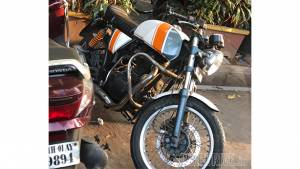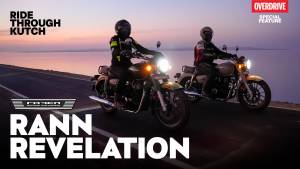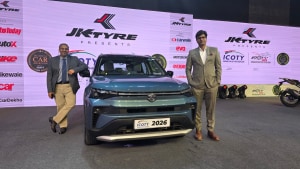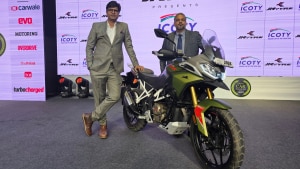Spec comparison: Royal Enfield Interceptor 650 Twin vs Harley-Davidson Street Rod vs Kawasaki Z650 vs Triumph Street Twin
Royal Enfield has landed a double whammy with the introduction of two new models powered by its parallel-twin engines, the Royal Enfield Continental GT 650 Twin, and Royal Enfield Interceptor 650 Twin at EICMA 2017. Now, these motorcycles are India-bound next year, and the revival of the Interceptor moniker has sent fans into a tizzy. With an expected price of around Rs 3 lakh, we believe this will not just form a segment of its own, but also compete with the twin-engined motorcycles from international bike makers in the country it undercuts. So, let's find out how well the Royal Enfield Interceptor 650 Twin does when pitted against the Kawasaki Z650, Harley-Davidson Street Rod, and Triumph Street Twin.
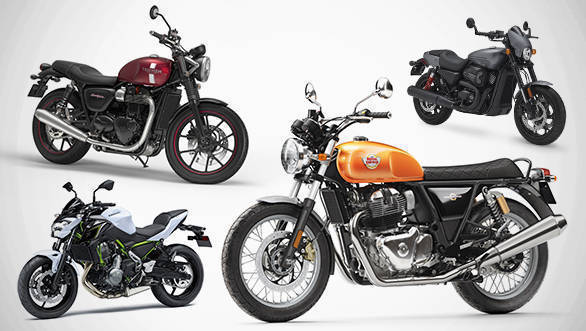
The Interceptor comes powered by the brand new oil and air-cooled 648cc parallel twin engine from Royal Enfield, while the Z650 displaces just 1cc more at 649cc in a similar configuration but with liquid cooling. The Street Twin also houses a liquid-cooled parallel twin, albeit in the largest displacement in this comparison, at 900cc. The H-D Street Rod is the odd one out with its 749cc V-twin engine.
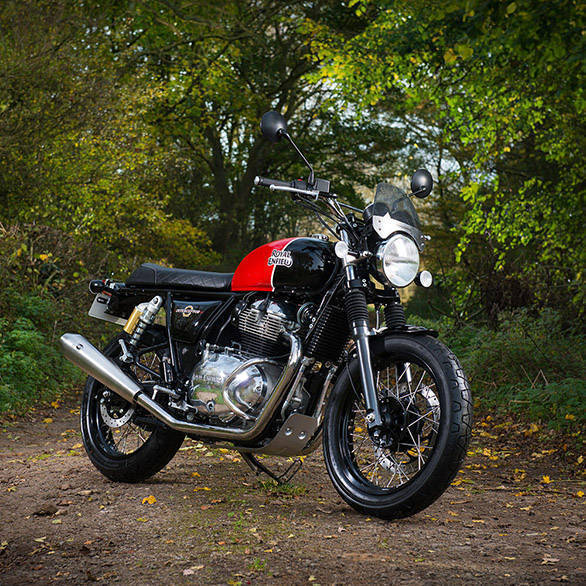
Of the four, the Z650's mill produces the most power at 68PS, and the Interceptor's twin the least at 47PS, and the Street Twin comes in at 55PS while the Street Rod's power output has not been shared by Harley-Davidson. However, the largest engine here, on the Street Twin, produces the most torque at 80Nm, followed by 65.7Nm from the Z650, 62Nm from the Street Rod and the Interceptor with the least torque at 52Nm.
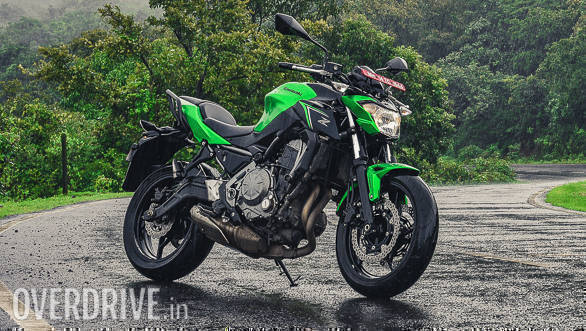
The Interceptor, Z650 and Street Twin are all within the same wheelbase range, separated incrementally by 5 mm each.The Street Road meanwhile gets a full 100mm over them in wheelbase thanks. Ground clearance too is best on the latter at 205mm, while the Interceptor sits 174mm off the ground. The Z650 and Street Twin have ground clearance of 130mm and 140mm respectively, meaning these may not as pliant over bad road surfaces as the first two.
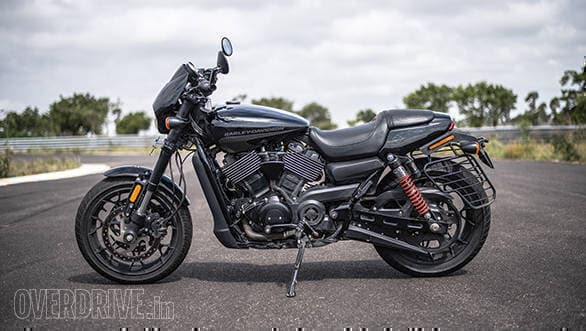 The Harley-Davidson Street Rod doesn't offer many options for mounting luggage and places the legs up high which initially feels odd
The Harley-Davidson Street Rod doesn't offer many options for mounting luggage and places the legs up high which initially feels odd
In terms of suspension, the Interceptor, Street Twin as well as the Z650 get 41mm telescopic front forks, while the Street Rod is the only one with 43mm upside down forks. At the rear, the Interceptor receives twin coil-over shocks, the Z650 gets a unique horizontal back-link shock with adjustable preload. The Triumph gets KYB twin shocks with adjustable preload, while the Street Rod comes equipped with gas-charged shocks at the rear.
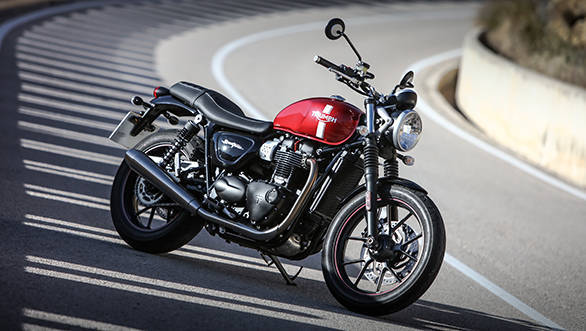
Interestingly, the Interceptor has the largest front disc brake at 320mm, while the others' discs are between 300mm and 310mm. Fuel capacity is highest in the Z650 at 15 litres, while the least frugal Street Twin also has the smallest tank of 12 litres. With an estimated price of Rs 3 lakh, the Royal Interceptor 650 Twin undercuts the other three motorcycles by literally half in the case of the Street Rod and the Street Twin. Given its specifications, the Interceptor will be able to rub shoulders with, if not compete with the likes of these motorcycles. Now we wait to see how well the Interceptor performs when it arrives in India around September 2018.
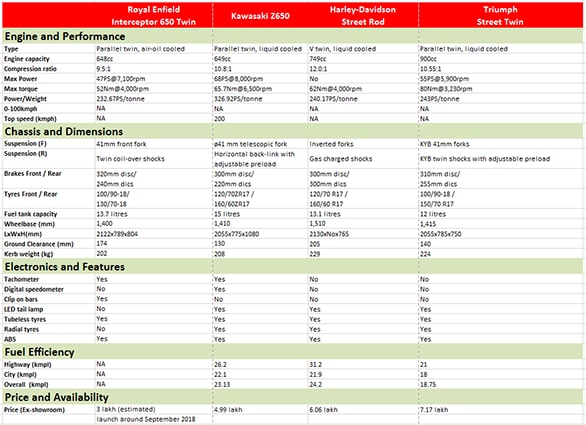
Also see: Royal Enfield Interceptor 650 & Continental GT 650 | First Ride
